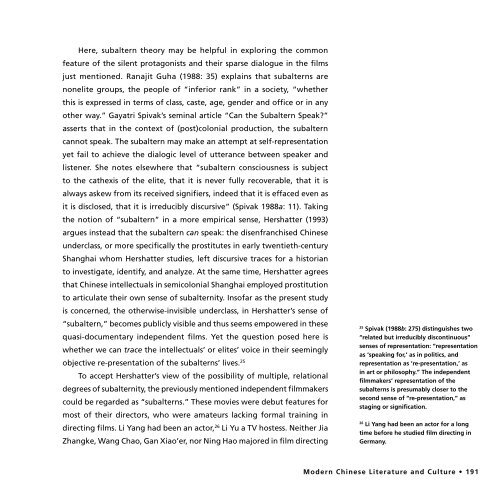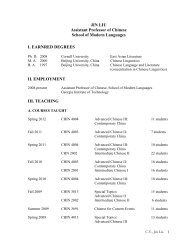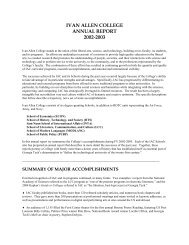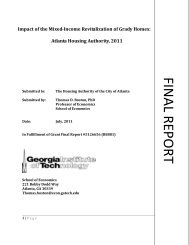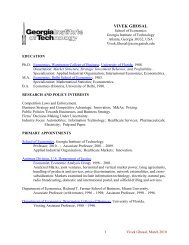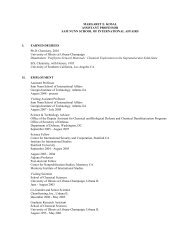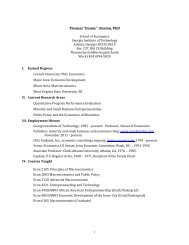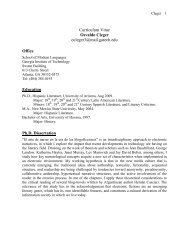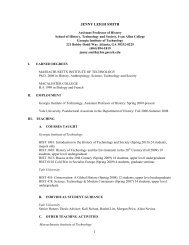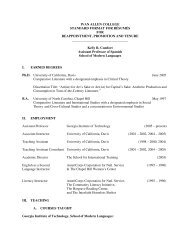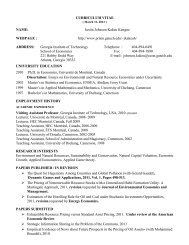Read this paper
Read this paper
Read this paper
Create successful ePaper yourself
Turn your PDF publications into a flip-book with our unique Google optimized e-Paper software.
Here, subaltern theory may be helpful in exploring the common<br />
feature of the silent protagonists and their sparse dialogue in the films<br />
just mentioned. Ranajit Guha (1988: 35) explains that subalterns are<br />
nonelite groups, the people of “inferior rank” in a society, “whether<br />
<strong>this</strong> is expressed in terms of class, caste, age, gender and office or in any<br />
other way.” Gayatri Spivak’s seminal article “Can the Subaltern Speak?”<br />
asserts that in the context of (post)colonial production, the subaltern<br />
cannot speak. The subaltern may make an attempt at self-representation<br />
yet fail to achieve the dialogic level of utterance between speaker and<br />
listener. She notes elsewhere that “subaltern consciousness is subject<br />
to the cathexis of the elite, that it is never fully recoverable, that it is<br />
always askew from its received signifiers, indeed that it is effaced even as<br />
it is disclosed, that it is irreducibly discursive” (Spivak 1988a: 11). Taking<br />
the notion of “subaltern” in a more empirical sense, Hershatter (1993)<br />
argues instead that the subaltern can speak: the disenfranchised Chinese<br />
underclass, or more specifically the prostitutes in early twentieth-century<br />
Shanghai whom Hershatter studies, left discursive traces for a historian<br />
to investigate, identify, and analyze. At the same time, Hershatter agrees<br />
that Chinese intellectuals in semicolonial Shanghai employed prostitution<br />
to articulate their own sense of subalternity. Insofar as the present study<br />
is concerned, the otherwise-invisible underclass, in Hershatter’s sense of<br />
“subaltern,” becomes publicly visible and thus seems empowered in these<br />
quasi-documentary independent films. Yet the question posed here is<br />
whether we can trace the intellectuals’ or elites’ voice in their seemingly<br />
objective re-presentation of the subalterns’ lives. 25<br />
To accept Hershatter’s view of the possibility of multiple, relational<br />
degrees of subalternity, the previously mentioned independent filmmakers<br />
could be regarded as “subalterns.” These movies were debut features for<br />
most of their directors, who were amateurs lacking formal training in<br />
directing films. Li Yang had been an actor, 26 Li Yu a TV hostess. Neither Jia<br />
Zhangke, Wang Chao, Gan Xiao’er, nor Ning Hao majored in film directing<br />
25<br />
Spivak (1988b: 275) distinguishes two<br />
“related but irreducibly discontinuous”<br />
senses of representation: “representation<br />
as ‘speaking for,’ as in politics, and<br />
representation as ‘re-presentation,’ as<br />
in art or philosophy.” The independent<br />
filmmakers’ representation of the<br />
subalterns is presumably closer to the<br />
second sense of “re-presentation,” as<br />
staging or signification.<br />
26<br />
Li Yang had been an actor for a long<br />
time before he studied film directing in<br />
Germany.<br />
Modern Chinese Literature and Culture • 191<br />
MCLC 18.2.indd 191<br />
12/20/06 2:01:39 PM


